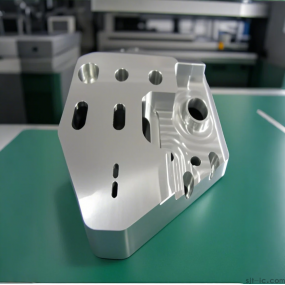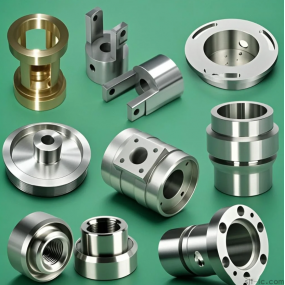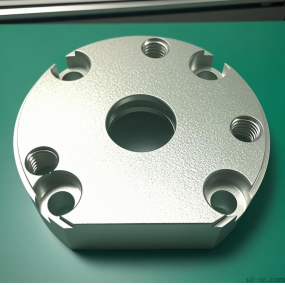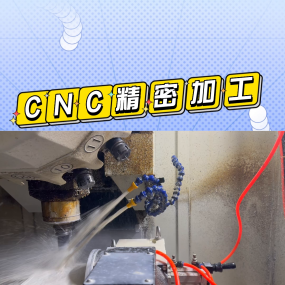There are indeed some difficulties in the practical application of five axis machining technology, mainly due to its complex machining process and high-precision requirements. Here are some main difficulty points: 1. Tool path planning: In five axis machining, tool path planning is a complex process. Especially for parts with complex surface structures such as impellers, there are many constraints on the tool path, and the space between adjacent blades is small. During machining, collision interference is easily generated, making it difficult to automatically generate interference free tool paths. 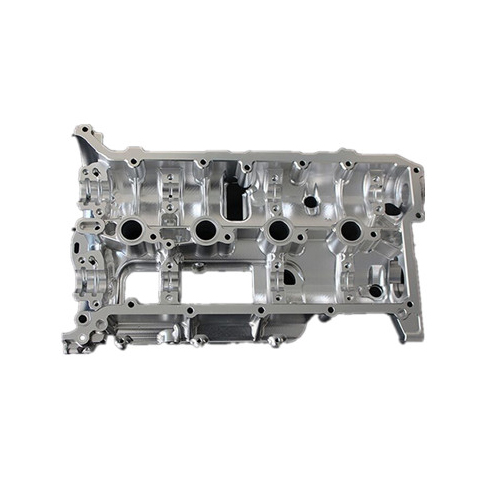 2. Machining accuracy control: Five axis machining requires high precision, especially when dealing with thin-walled parts, such as narrowed flow channels of impellers, relatively long blades, low stiffness, and easy deformation during CNC Machining. At the same time, the control of cutting depth is also a key technology in five axis CNC machining, and a slight mistake may lead to tool breakage. 3. High programming complexity: Five axis machining requires precise machining programs, which places high demands on technical expertise and programming skills. Automated programming requires pre-processing, generating the trajectory of CNC machining tools, and generating G-code programs, which requires rich experience and professional knowledge. 4. High equipment cost: Five axis machine tools have high manufacturing difficulty and strict technical requirements, so equipment costs are usually higher than traditional machine tools. At the same time, for certain key components, they may not be able to be manufactured domestically and rely on imports, which also increases production costs. 5. Difficulty in operation and maintenance: The operation of five axis machine tools requires complex knowledge such as multi axis linkage and spatial attitude adjustment, which requires high quality and skills from operators. Meanwhile, the maintenance of five axis machine tools also requires professional technicians, and once a malfunction or damage occurs, the repair cost may be higher than that of traditional machine tools.
2. Machining accuracy control: Five axis machining requires high precision, especially when dealing with thin-walled parts, such as narrowed flow channels of impellers, relatively long blades, low stiffness, and easy deformation during CNC Machining. At the same time, the control of cutting depth is also a key technology in five axis CNC machining, and a slight mistake may lead to tool breakage. 3. High programming complexity: Five axis machining requires precise machining programs, which places high demands on technical expertise and programming skills. Automated programming requires pre-processing, generating the trajectory of CNC machining tools, and generating G-code programs, which requires rich experience and professional knowledge. 4. High equipment cost: Five axis machine tools have high manufacturing difficulty and strict technical requirements, so equipment costs are usually higher than traditional machine tools. At the same time, for certain key components, they may not be able to be manufactured domestically and rely on imports, which also increases production costs. 5. Difficulty in operation and maintenance: The operation of five axis machine tools requires complex knowledge such as multi axis linkage and spatial attitude adjustment, which requires high quality and skills from operators. Meanwhile, the maintenance of five axis machine tools also requires professional technicians, and once a malfunction or damage occurs, the repair cost may be higher than that of traditional machine tools.
Hello! Welcome to EMAR's website!
 English
English » »
» »
 Spanish
Spanish Arabic
Arabic French
French Portuguese
Portuguese Belarusian
Belarusian Japanese
Japanese Russian
Russian Malay
Malay Icelandic
Icelandic Bulgarian
Bulgarian Azerbaijani
Azerbaijani Estonian
Estonian Irish
Irish Polish
Polish Persian
Persian Boolean
Boolean Danish
Danish German
German Filipino
Filipino Finnish
Finnish Korean
Korean Dutch
Dutch Galician
Galician Catalan
Catalan Czech
Czech Croatian
Croatian Latin
Latin Latvian
Latvian Romanian
Romanian Maltese
Maltese Macedonian
Macedonian Norwegian
Norwegian Swedish
Swedish Serbian
Serbian Slovak
Slovak Slovenian
Slovenian Swahili
Swahili Thai
Thai Turkish
Turkish Welsh
Welsh Urdu
Urdu Ukrainian
Ukrainian Greek
Greek Hungarian
Hungarian Italian
Italian Yiddish
Yiddish Indonesian
Indonesian Vietnamese
Vietnamese Haitian Creole
Haitian Creole Spanish Basque
Spanish Basque


